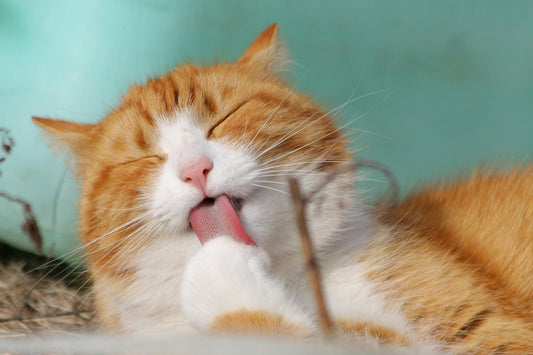
The Magic of Mirror Self-Recognition in Cats: Do Cats Recognize Themselves in Mirrors?
Have you ever wondered what your cat thinks when they see their reflection in a mirror? Do they recognize themselves, or do they think it's another cat? The answer lies in the fascinating phenomenon of mirror self-recognition, a cognitive ability that has been studied extensively in animals.

What is Mirror Self-Recognition?
Mirror self-recognition is the ability to recognize oneself in a mirror. It's a complex cognitive process that requires a level of self-awareness, consciousness, and intelligence. In humans, mirror self-recognition develops in children around 18-24 months old.

The Mirror Self-Recognition Test
The mirror self-recognition test is a simple yet effective way to assess an animal's ability to recognize itself in a mirror. Here's how it works:
- A mark or sticker is placed on the animal's body, usually on the forehead or nose.
- The animal is then placed in front of a mirror.
- If the animal touches or examines the mark on their own body while looking in the mirror, it's a sign that they recognize themselves.
Do Cats Recognize Themselves in Mirrors?
Research suggests that cats do not possess the same level of mirror self-recognition as humans or some other animals, such as primates, dolphins, and elephants. In one study, only 2 out of 10 cats demonstrated self-directed behavior in front of a mirror.
However, it's essential to note that cats may still exhibit some level of self-awareness, even if they don't pass the mirror self-recognition test. For example, cats may use mirrors to practice social behaviors, such as grooming or vocalizing.

What Does Mirror Self-Recognition Reveal About Cat Intelligence and Consciousness?
Mirror self-recognition is often seen as a benchmark of cognitive ability and consciousness in animals. While cats may not possess the same level of self-awareness as some other animals, they are still remarkable creatures with unique cognitive abilities.
Cats have demonstrated exceptional problem-solving skills, memory, and adaptability in various studies. They also exhibit complex social behaviors, such as communication, cooperation, and even empathy.

How Does Mirror Self-Recognition Compare Across Different Animal Species?
Mirror self-recognition has been studied in various animal species, including primates, dolphins, elephants, and even birds. Here's a brief overview of the results:
- Primates: Chimpanzees, bonobos, and orangutans have demonstrated mirror self-recognition.
- Dolphins: Bottlenose dolphins have shown self-directed behavior in front of mirrors.
- Elephants: Asian elephants have demonstrated mirror self-recognition.
- Birds: Some bird species, such as magpies and crows, have shown self-directed behavior in front of mirrors.
Conclusion
The magic of mirror self-recognition is a fascinating phenomenon that continues to captivate scientists and animal enthusiasts alike. While cats may not possess the same level of self-awareness as some other animals, they are still remarkable creatures with unique cognitive abilities.
By studying mirror self-recognition in different animal species, we can gain a deeper understanding of their cognitive abilities, consciousness, and social behaviors. Who knows? Maybe one day we'll discover that cats have a secret talent for mirror self-recognition!
Sources:
- Scientific American, "Do Cats Recognize Themselves in Mirrors?"
- National Geographic, "The Mirror Self-Recognition Test"
- PetMD, "Cat Intelligence: What We Know"




